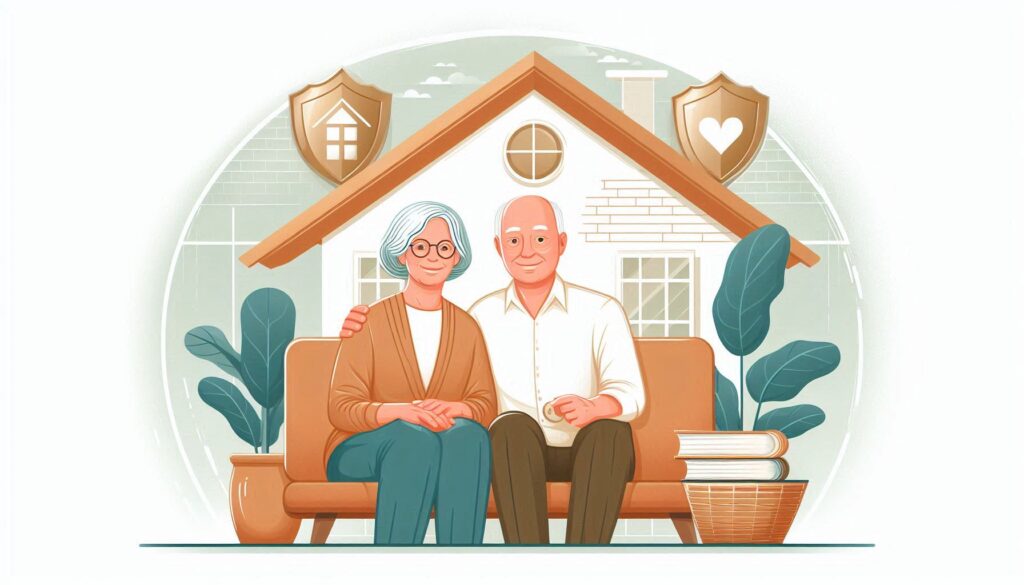Introduction
Retirement security is a cornerstone of Australian society, but a growing number of retirees are facing significant stress due to a critical flaw in the system: the assumption of home ownership. While owning a home can provide financial security and peace of mind, renters in retirement are often left behind.
The Home Ownership Bias
Australia’s retirement system is designed around home ownership, with policies and incentives that favour homeowners. The age pension asset test exemptions, superannuation incentives, and other benefits all assume that retirees own their homes. However, this bias leaves renters in retirement facing reduced pension eligibility, increased financial stress, and a lower quality of life.
The Reality for Renters in Retirement
Research from the Grattan Institute indicates that in 2020, 80% of Australian’s owned their own home in retirement and that on current trends, by 2056 only 67% of Australian’s will own their own home in retirement with the balance renting. Grattan estimates that nearly half of all retirees who rent in retirement are living in poverty. Based on the current numbers, thats about 10% of all Australian retirees, and expected to grow to be about 17% by 2056.
Each of these individuals face significant challenges including:
- Financial Stress: Despite not owning a home and having the added cost of rent in retirement, the aged pension doesnt provide you any extra money which creates significant financial stress.
- Emotional Stress: Significant other non financial stresses such as emotional stress from not knowing whether you will be able to afford the rent after the next increase, or where you’ll move if the landlord evicts you.
Breaking the Cycle: Affordable Housing Options
Fortunately, a mix of private and public solutions exist to help out renters in retirement.
Social Housing: A Limited Solution
Federal and state governments fund a limited number of social and affordable housing options for retirees. However its important to understand the key limitations that apply:
- Lengthy Waitlists: The waitlist for social and affordable housing in NSW alone had approximately 57,000 people already on it as of 2024 and has generally increased over time with housing market pressures, cost of living challenges and declining productivity in the construction sector making it more difficult to add to housing supply.
- Strict Eligibility Criteria: Not everyone will be eligible for social housing and governments and their agencies who provide the home have various criteria that must be met. In NSW for example, the following criteria apply:
- Income Thresholds: $35,000 p.a. for singles, or $45,000 p.a. for couples.
- Assets Tests: Your total assets including property must be deemed not capable of otherwise resolving your housing situation (i.e. they deem you unable to afford a private rental).
- Housing Need: You must be deemed to be in need of housing. Examples include either being homeless or at risk of of homelessness, living in overcrowded or unsuitable accommodation, having a disability or medical condition that requires specialised housing, or being a victim of domestic violence.
- Limited Availability: Even if you meet all of these thresholds, the availability is limited which is why lengthy waitlists already exist. For many people, they can be waiting for 2 years or longer.
Life Estates: A Viable Alternative
In contrast, Life Estate offers a readily available private market alternative with access to secure affordable housing for retirees who are able to make a financial contribution towards the purchase cost. Life Estate’s have:
- No Roadblocks: As a private market solution, there are no waitlists or eligibility criteria that apply. If you’re able to make an appropriate financial contribution towards the purchase cost (typically around 50% of the purchase price), then we can help get you into an affordable home quickly.
- Reduced Upfront Costs: By partnering you with an investor who shares the burden of the purchase cost of your home, we reduce the price you pay for it, making it far more affordable.
- Improved Pension Payments: Where financial assets may have otherwise left you with a part pension, or no pension at all, putting some of these into a home which is excluded from the assets test can potentially improve your pension eligibility.
- Security For Life: By ensuring that your life estate over the property purchased is registered on title, you can be confident that you have total security of home ownership for life.
Case Study: Tony’s Story
Despite being on a part pension and with not enough financial assets to own a home, Tony was deemed too wealthy to qualify for social housing but still needed to find an affordable solution. By purchasing a life interest in a home with Life Estate Tony was able to eliminate his rental expenses of $480 per week and ensure there is no risk of these increasing in the future. He needed to contribute $270,000 towards the purchase cost of the home which reduced his financial assets enough to provide him with a full aged pension. This means that not only is he saving $480 per week in rent, he was able to receive more in pension payments too leaving him more than $500 per week better off. Critically, there were no waitlists and the entire process was undertaken in about 7 weeks (plus settlement time on his property). He’s now back to enjoying his retirement.
At Life Estate, we specialise in helping retirees make the most of their retirement. No matter what your ideal retirement looks like, by maximising the choice you have in affordable homes whilst utilising a structure that may improve your pension eligibility, we’ll have you well on your way to the secure and enjoyable retirement you deserve.
For more information about our affordable housing solutions or to get in touch and discuss how we can assist…


